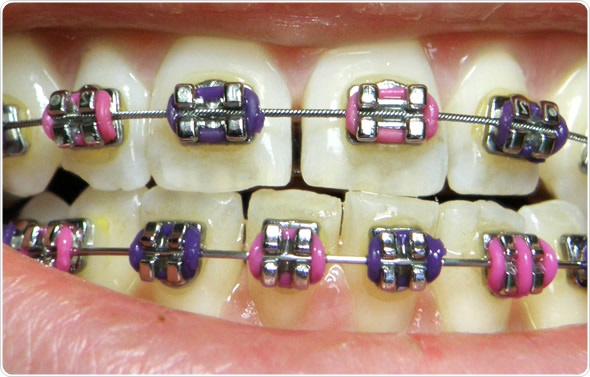Comprehensive Guide to Orthodontics Treatments for Fixing Oral Imbalances
Recognizing the ins and outs of each treatment, including their devices, advantages, and potential drawbacks, is crucial in making notified decisions about one's orthodontic therapy. As we navigate through the extensive overview to orthodontic procedures for fixing dental misalignments, the intricate information of each method will unravel, dropping light on the path toward a functional and harmonious dental alignment.
Orthodontic Procedures Summary

Along with clear aligners and standard braces, orthodontists may likewise advise various other treatments like headwear, palatal expanders, or retainers to address details placement issues (invisalign). These procedures are customized per patient's special needs and might entail a combination of treatments to achieve the wanted results. Routine changes and surveillance are crucial parts of orthodontic therapy to guarantee development gets on track and to make any essential adjustments in the process. By undergoing orthodontic procedures, people can not just attain a straighter grin yet likewise improve their general dental health and function.
Standard Dental Braces: How They Function
When considering orthodontic treatments for oral imbalances, conventional dental braces stand apart as a time-tested method for remedying teeth placing. Typical dental braces contain braces, cords, and bands that interact to use constant stress on the teeth, gradually relocating them into the wanted positioning. The brackets are affixed to the teeth utilizing a special adhesive, and the cables are threaded with the brackets. By readjusting the tension of the cables, orthodontists can regulate the direction and force related to each tooth, guiding them into correct positioning with time.
As stress is used to the teeth with the braces, the bone bordering the teeth is improved to support the new tooth settings. Patients will need normal modifications at the orthodontist's office to make sure the dental braces proceed to use the right stress for effective teeth movement.
Unnoticeable Aligners: Pros and Disadvantages
Unnoticeable aligners provide a discreet and hassle-free choice to traditional braces for fixing dental misalignments. These clear, personalized trays are essentially unseen when worn, making them an attractive choice for individuals seeking an extra cosmetically pleasing orthodontic therapy. One of the main advantages of unnoticeable aligners is their removability, permitting for much easier maintenance of dental health compared to conventional dental braces. Clients can remove the aligners before consuming or cleaning their teeth, minimizing the threat of food getting stuck in the appliance and streamlining the cleaning procedure.

Surgical Orthodontic Options
Surgical treatments in orthodontics existing practical alternatives for addressing complicated oral imbalances that might not be efficiently dealt with through conventional orthodontic therapies. While invisible aligners and traditional braces can correct several orthodontic issues, certain cases require surgical intervention to sedation dental care attain optimum outcomes. Surgical orthodontic choices are generally advised for serious malocclusions, significant jaw disparities, and cases where the underlying bone framework needs alteration to accomplish correct alignment.
One typical surgical orthodontic procedure is orthognathic surgical procedure, which includes repositioning the jaws to deal with useful concerns such as trouble chewing or speaking. This surgery is commonly done in cooperation with an orthodontist that helps align the teeth before and after the procedure. Surgical orthodontics might also entail treatments to reveal impacted teeth, remove excess periodontal tissue, or improve the jawbone to develop an extra unified face profile.
Before taking into consideration surgical orthodontic choices, clients go through a thorough assessment to figure out the need and prospective advantages of such interventions. cumming orthodontics. While surgical treatment may seem challenging, it can considerably enhance both the feature and aesthetic appeals of the smile in cases where conventional orthodontic therapies drop short
Retainers and Post-Treatment Treatment

Post-treatment care involves complying with the orthodontist's directions diligently. This may consist of correct dental hygiene methods, participating in follow-up visits, and wearing the retainers as prescribed. Failing to follow post-treatment care directions can result in relapse, where the teeth slowly return in the direction of their initial settings. Regular retainer wear, great dental hygiene, and normal dental exams are necessary for keeping the results accomplished through orthodontic surgery and ensuring the long-lasting stability of the corrected oral placement.
Conclusion
To conclude, orthodontic procedures use different alternatives for remedying dental imbalances. Conventional braces utilize steel braces and wires to move teeth into proper placement. Undetectable aligners offer a more very discreet alternative however may not appropriate for all instances. Surgical orthodontic options are available for a lot more severe misalignments. Retainers are commonly used post-treatment to preserve the new placement. In general, orthodontic treatments can successfully enhance dental health and aesthetic look.
As we browse through the thorough guide to orthodontic procedures for remedying dental imbalances, the intricate details of each technique will certainly look at this web-site unravel, shedding light on the path towards a functional and unified oral positioning. - cumming orthodontist
One of the most usual orthodontic treatments is the usage of braces, which consist of steel braces and wires that apply mild stress to gradually move teeth into the desired placement.When taking into consideration orthodontic treatments for oral misalignments, traditional braces stand out as a reliable approach for dealing with teeth placing. Additionally, invisible aligners might not be appropriate for complex orthodontic problems directory that require even more significant teeth motion, as they are normally recommended for mild to moderate instances. Retainers are tailor-made orthodontic tools designed to hold teeth in their corrected placements after the completion of orthodontic therapy.